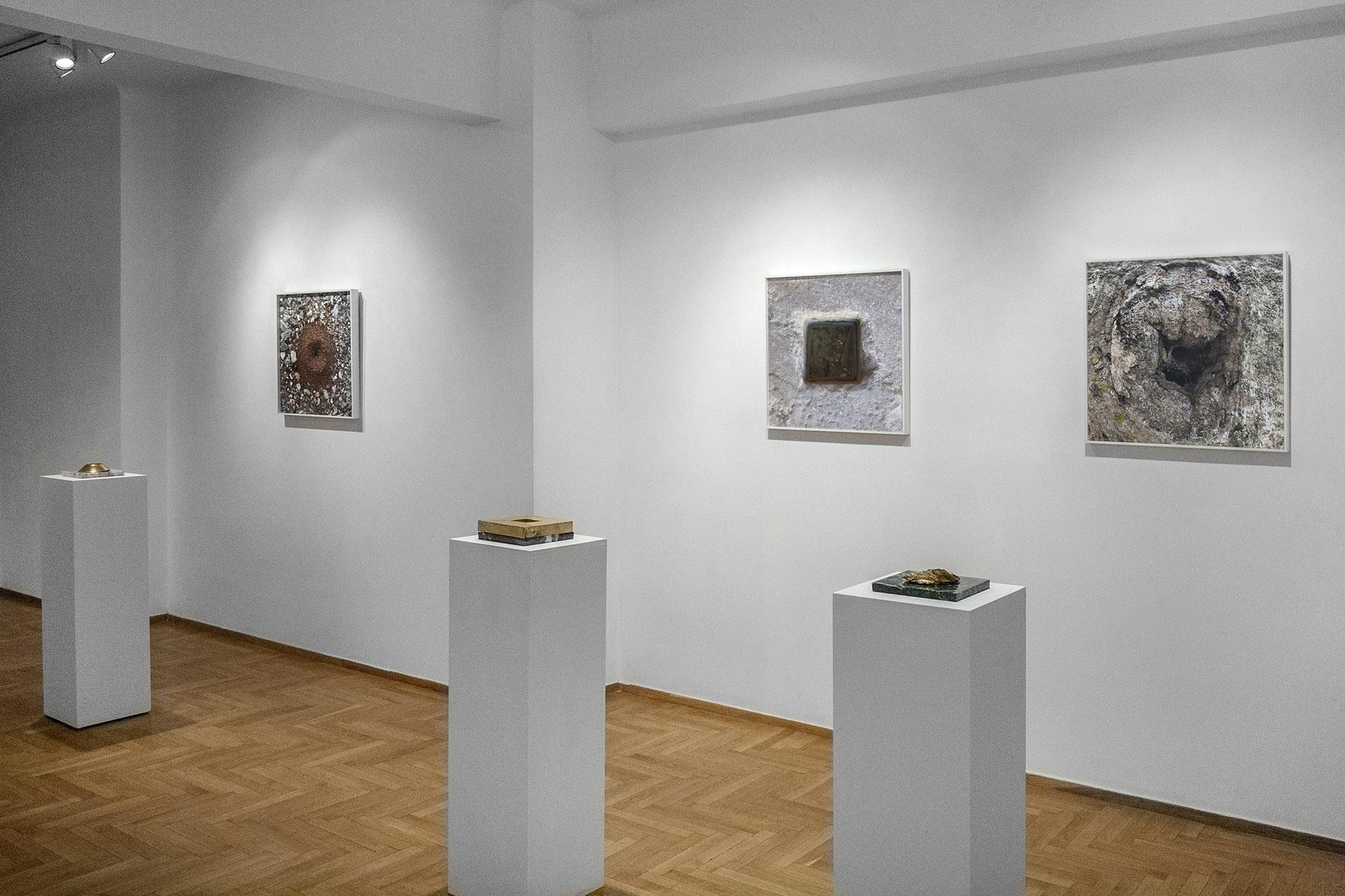Room of Punishment, June 2018
Myth is a universal postulation of Greek existence. The entire civilisation, along with all the commissions and omissions, was still the old original one, except that it was gradually evolving. Man was still aware of the mythic and sacred source of countless forms of life, and felt very close to that source.
Jacob Burckhardt
The Room of Punishment is Margarita Myrogianni’s attempt to respond to the exacting challenge of turning (on pain of punishment) mythological themes into images.
The myth of Sisyphus is the banishment of the craftiest of men in Tartarus, where he is forced to carry a boulder to the top of a mountain, only to have it roll down to the bottom each time, and having to be carried back to the top in order to fulfil the will of God, who’s been insulted by the craftiness of his creation. Myrogianni uses this myth as the starting point of her attempt to illustrate the mythical content of punishment, as well as its existential counterpart that she experiences in the process of fulfilling her own creativity. Swinging between two and three dimensions (photography and sculpture) represents her own repetitive, fruitless act.
Tantalus pays for his own hubris against the gods- which twofold: first stealing their food and then offering them the body of his own child as a delicacy, to fool them. Confined to a pool of water that dries up each time he tries to drink, and shaded by a fruit tree that moves away every time he attempts to reach for its fruit, he remains eternally thirsty and hungry.
Prometheus, with his act- to steal fire, from the gods - symbolises the passing on of divine creativity to the destructive and finite nature of mankind. The subversion of this contract confines every creative attempt a priori to the torture of the punishment of the repetition of achievement and its cancellation, at the same time. It’s a special condition of punishment because it takes place in life and not in the kingdom of Hades, as with all the others that are referenced in the exhibition. That may be the most striking feature of the contrast of terms between a bleak theme of punishment and the visual elements that interpret it. The simplicity of the minimalist elements of the three-dimensional objects, the polychromy of the photographs of the selected objects in nature, which are enlisted to represent punishment, establish the ambiguity through which the artist aims to filter the certainty of our determinist thought.
The cross-section of the anatomical product of the brain’s frontal lobe – home of emotions and conscious acts – connects both representationally and semantically the relationship of the only mythical heroine Hypermnestra who, in contrast to her 49 sisters, avoids punishment by committing an act of love and respect towards human vulnerability, by sparing her husband’s life. Here, in the form of small cones screwed to a leather surface, we are confronted with the essence of the repetitive nature of punishment, both as an image and as suffering.
Kyrillos Sarris, Athens 2018
Translated from Greek By Daphne Kaspali



